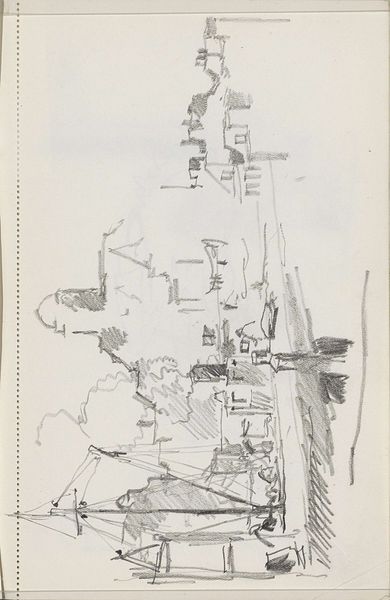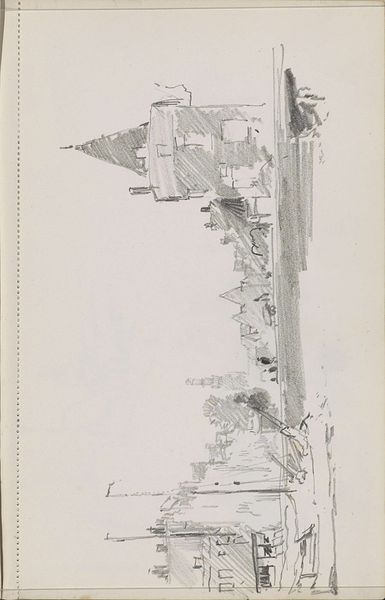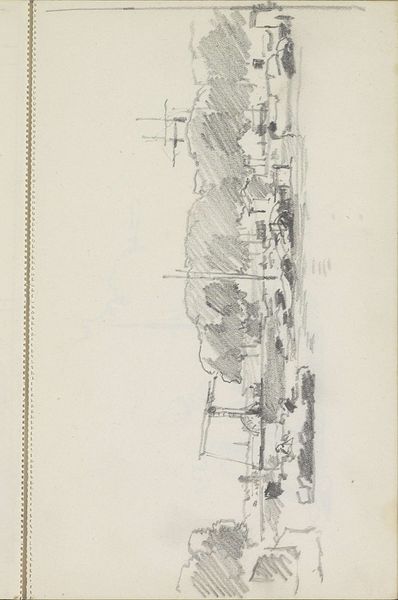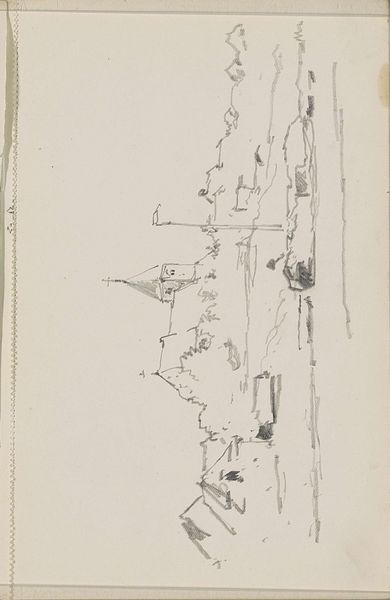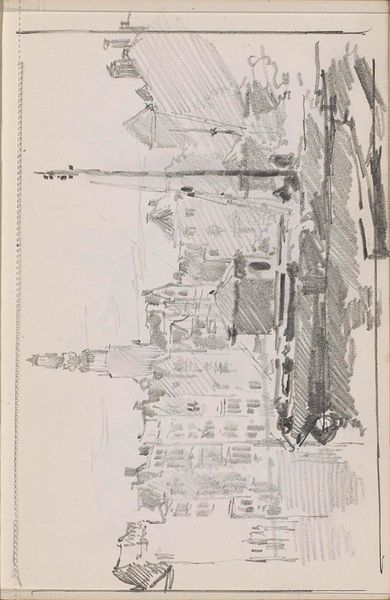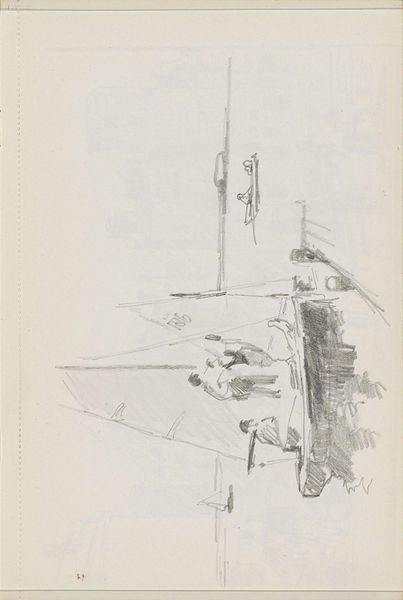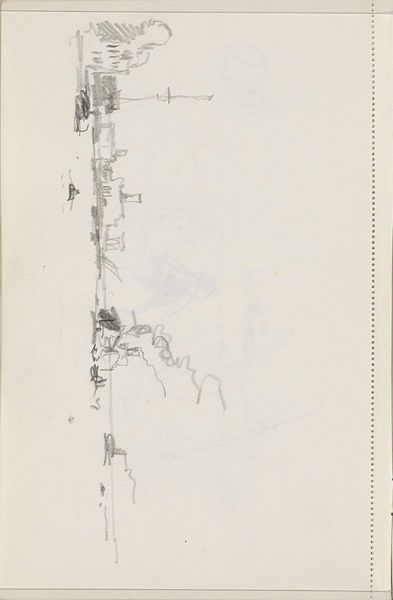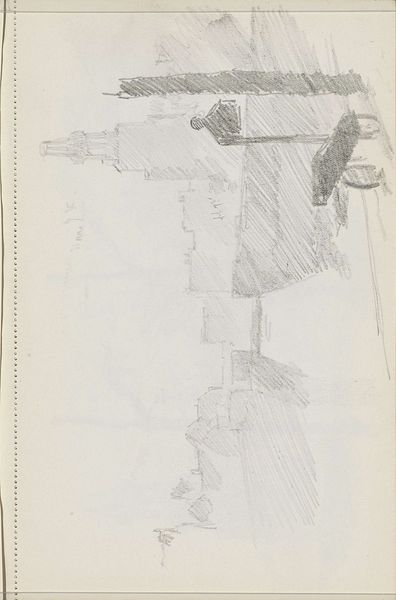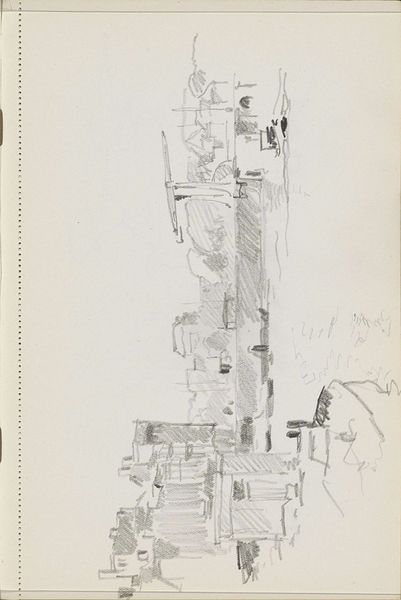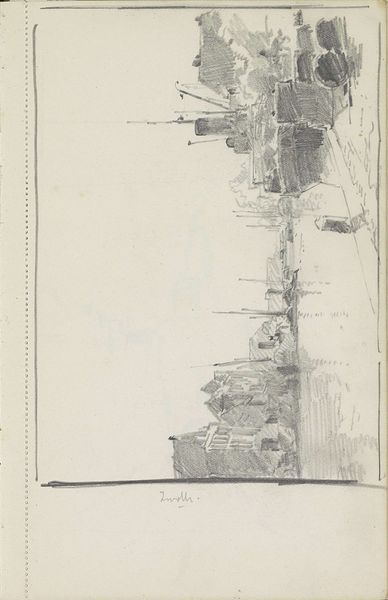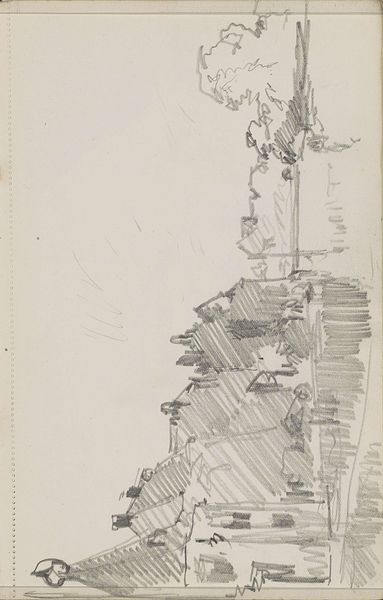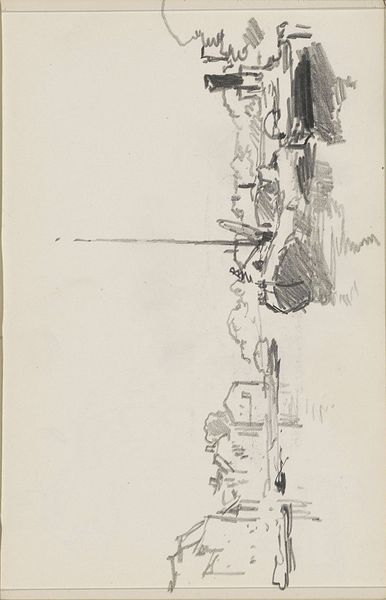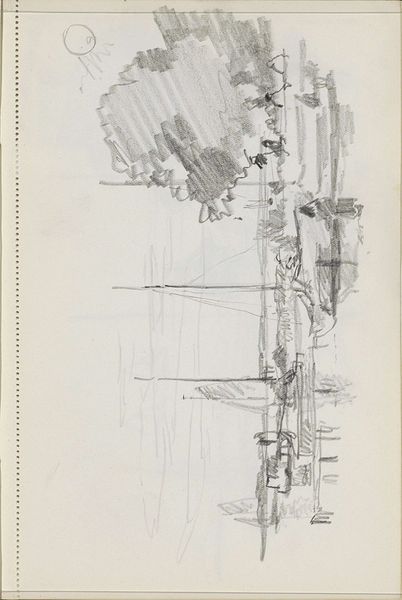
drawing, pencil
#
drawing
#
amateur sketch
#
light pencil work
#
pen sketch
#
pencil sketch
#
incomplete sketchy
#
landscape
#
personal sketchbook
#
ink drawing experimentation
#
pen-ink sketch
#
pencil
#
sketchbook drawing
#
cityscape
#
initial sketch
Copyright: Rijks Museum: Open Domain
Curator: This drawing by Cornelis Vreedenburgh, titled "Damrak met de toren van de Oude Kerk," gives us a glimpse into Amsterdam between 1890 and 1946. What are your initial impressions? Editor: It looks like a preliminary sketch, capturing a fleeting moment. The rough lines and minimal shading suggest an immediacy, a focus on the structure’s basic form rather than fine detail. I'm interested in the artist's choice of this viewpoint, the tall structure from such an odd angle. Curator: The viewpoint is indeed intriguing. The Damrak, as a central hub, held significant importance. Vreedenburgh, perhaps reflecting the growing urban consciousness, chooses to depict it. This tower of the Oude Kerk against the backdrop of the city tells a story about the relationship between religion, commerce, and the evolving urban landscape. It is positioned prominently and yet not. It looks as if the artists was simply capturing a quick moment. Editor: Right, and it is a medium of humble pencil on what seems like regular sketchbook paper. This isn't about expensive materials or a grand commission, suggesting that the drawing came before profit. The lines themselves almost reveal the speed of the hand moving across the paper; one can observe what may have been a brisk walk turned toward an object of visual interest and quickly rendered in just a moment. This evokes a sense of the city being ever-changing, almost fleeting and always full of industry. Curator: Exactly. It reflects a period where sketching and drawing were becoming increasingly accessible to a wider audience. This wasn't necessarily commissioned work for the elite. This sketch becomes valuable as a social document showing both the public’s artistic awareness of the Oude Kerk in a changing social landscape, and Vreedenburgh’s contribution to the politicization of Dutch urban art. Editor: It’s a reminder that art can arise from everyday labor. Vreedenburgh captures his subjects with modest, accessible means. Even with only simple techniques on mundane materials, the initial inspiration, the artist’s gaze, can convey a powerful representation. I’m compelled to reconsider art history from the bottom up rather than solely celebrating masters and expensive materials. Curator: Yes, considering art’s capacity for broader political influence allows us to discover many layers. Editor: Exactly.
Comments
No comments
Be the first to comment and join the conversation on the ultimate creative platform.
